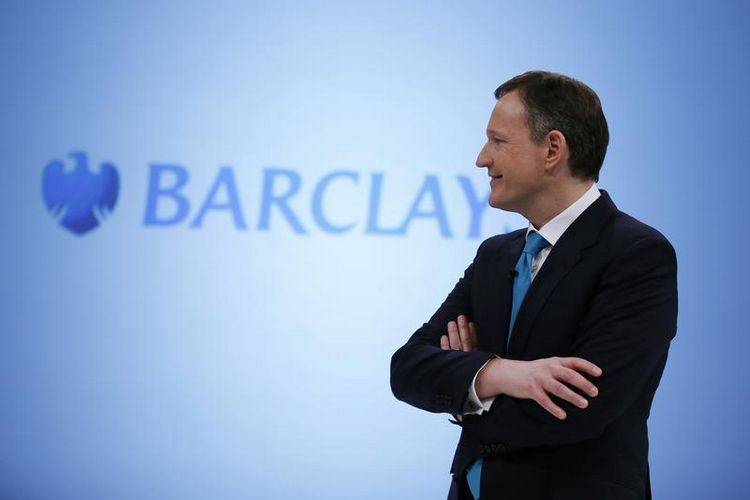Jenkins, who for the past year has affected a mild-mannered, very un-Bob Diamond demeanour, warned last Friday that Barclays might have to cut lending to meet its 3% leverage target by the end of the year. This, in turn, was met by a chorus of political demands not be held to ransom by the big banks, and an affirmation from the Bank of England that a capital-raising plan that relied on cutting lending would not be acceptable.
But Jenkins was left with little option. The PRA appears to have sprung the 3% leverage ratio out of nowhere. It was always supposed to come in by 2018, giving banks time to meet it through retained earnings (or squeezing their own comp).
Now, it is suddenly vital, for reasons undisclosed, to get it done by the end of 2013. To give the regulators their due, perhaps hosting a 40x levered global investment banking business is not the safest thing to do. But a 33x levered global investment banking business hardly looks much safer.
To meet the end of year deadline this fast, Barclays needs to raise equity or sell assets.
You might think it would be able to use sub debt to meet it. The EBA has specified technical standards for what Additional Tier 1 is in the brave new world - how to write it down, how to write it up, how to make sure it absorbs losses. It has done this in full knowledge of the failure of pre-crisis hybrids, and explicitly intended to design loss-absorbing instruments.
The PRA has to accept these rules. Indeed, the UK, with possibly the largest and most experienced regulatory establishment in Europe, has been instrumental in preparing them.
But what is the point if it then decides the new instruments will not be capital, opting for a strict definition of equity, rather than all Tier 1 capital?
Capital or not?
Additional Tier 1, under the new rules, is specifically a creature of risk-weighted regimes. The trigger it must have is at 5.125% of risk-weighted assets. But nonetheless, the write-down it will experience once triggered is real and just as valid in a leverage ratio as a risk-based capital regime.
The distinction between risk-based and pure leverage ratio is about the asset side of the balance sheet, not the liabilities. It is hard to see why there should be any distinction between the definition of going concern loss-absorbing capital between the two regimes.
But the PRA evidently thinks otherwise, so Barclays cannot issue hybrids to meet its “urgent” leverage ratio target. That means raising equity (while trading at 70% of book value) or shrinking assets. Jenkins, then, is wheeled out to apologise for being caught in a trap not of his making.
Barclays has shown itself willing to act early on capital, issuing two round of CoCos in Tier 2 hosts in November and April. These are supposed to be “gone-concern” capital, but the write-downs are real and the triggers are respectable, at 7%.
Perhaps a gentle steer that it would need to meet a leverage ratio of the PRA’s devising might have encouraged Barclays to do more earlier. The Financial Policy Committee’s Martin Taylor, formerly of Barclays himself, said that the Treasury Select Committee should not be “taken in” by claims from the banks that the leverage ratio was a surprise. But it is hard to read it any other way.
Every public pronouncement suggested the leverage ratio was on track for 2018. Every part of UK bank behaviour suggests that these institutions were blindsided by the demand to raise CET1 by the end of the year, or else.
Barclays, calculating its own leverage ratio in the April 2013 IMS, came up with 20x. The PRA “found” an extra 20 turns when it did the numbers, possibly by counting derivatives exposures differently. Apart from providing an illustration of just how complex coming up with objective ratios can be, this does not suggest an institution that knew what was coming.
Blame and shame?
So who screwed up? Regulators are blaming Barclays, who did too little too late. Barclays, mindful of a somewhat tense political environment, is blaming nobody. The regulatory machinery has been changing rapidly, with architects of the old regime, such as Paul Tucker, departing, and vastly enhanced regulatory powers for the Bank following the dissolution of the FSA.
Mistakes do happen in such environments. Barclays may have taken a cue from one end of the regulatory machinery that it wants more gone-concern loss absorption urgently, and the leverage ratio could wait, only to have this order countermanded from on high.
Or regulators might have a grudge against Barclays. It is the poster bank for the Libor scandal, proud defier of state assistance and defender of universal banking. The increasingly powerful Parliamentary Commission on Banking Standards could also have encouraged the PRA to act early.
Its first report, in December, said that the Financial Politicy Committee should have the duty of setting the leverage ratio from Spring 2013, and that it expected the leverage ratio to be set significantly higher than the 3% minimum required under Basel III – an odd comment for a backbench committee to make to a nominally independent central bank, but a comment which may have been influential.
But the PRA ought to know better. Political interference should not trump the logic of a consistent capital regime. There are sound, valid reasons to dislike and disavow contingent instruments, but the PRA must do so consistently.
